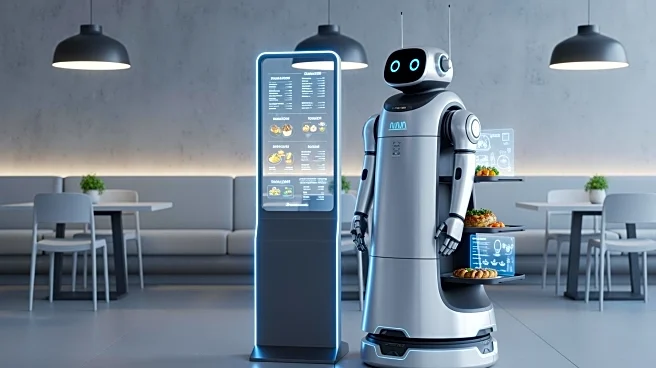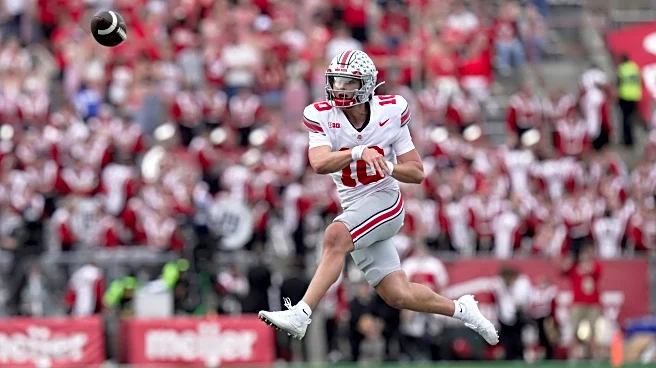What's Happening?
White Castle has launched a new restaurant concept in Columbus, Ohio, called the 'Castle of Tomorrow.' This location features advanced technology, including a robotic fry station assistant, an AI-powered
drive-thru system, and self-service kiosks. These innovations are part of White Castle's strategy to modernize its operations and enhance the dining experience for both customers and employees. The restaurant's design includes a sleek, open layout with vibrant colors and higher ceilings, aiming to create a more inviting atmosphere. The 'Castle of Tomorrow' is a prototype that reflects White Castle's commitment to innovation and customer satisfaction.
Why It's Important?
The introduction of the 'Castle of Tomorrow' signifies a significant shift in the fast-food industry towards integrating technology to improve efficiency and customer service. By adopting AI and robotics, White Castle aims to streamline operations, reduce wait times, and potentially increase sales through digital ordering systems. This move aligns with trends seen in other major chains like Wendy's and McDonald's, which have also embraced technology to enhance their service offerings. However, the shift towards a more automated experience may not appeal to all customers, as some prefer traditional human interactions. The success of this initiative could influence other fast-food chains to adopt similar technological advancements.
What's Next?
White Castle has not yet announced plans to expand the 'Castle of Tomorrow' concept to its other locations. The company is likely to evaluate the performance and customer feedback from the Columbus prototype before deciding on a broader rollout. If successful, this model could be implemented in more of its 350 restaurants nationwide. The company will need to balance technological innovation with maintaining its brand identity and customer loyalty, particularly among its core customer base. Future developments may include further enhancements to the technology used and potential adjustments based on customer preferences and operational efficiency.
Beyond the Headlines
The move towards automation in the fast-food industry raises questions about the future of employment in this sector. While technology can improve efficiency and reduce costs, it may also lead to a reduction in the need for human labor. This shift could have broader implications for the workforce, particularly for entry-level positions traditionally filled by young or low-skilled workers. Additionally, the increased use of AI and robotics in customer service settings may lead to changes in consumer expectations and preferences, potentially driving further innovation in the industry.













